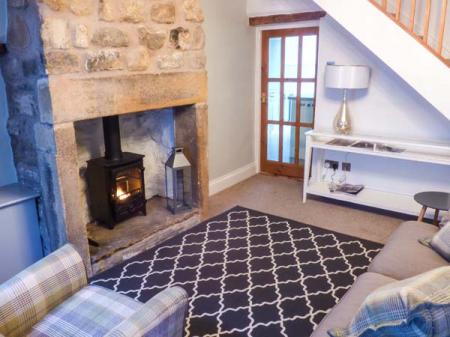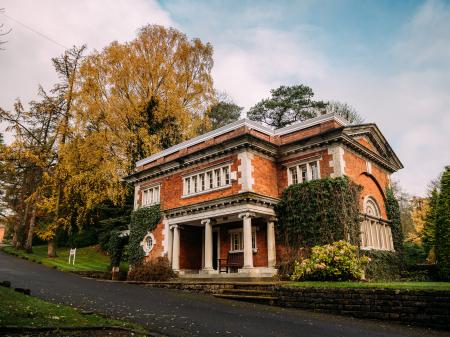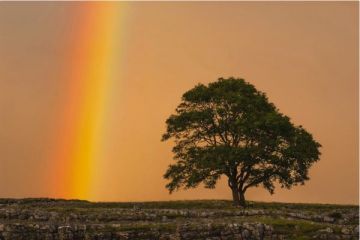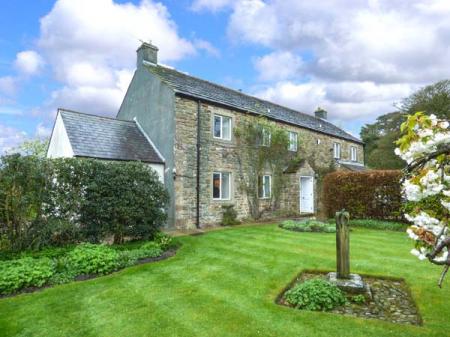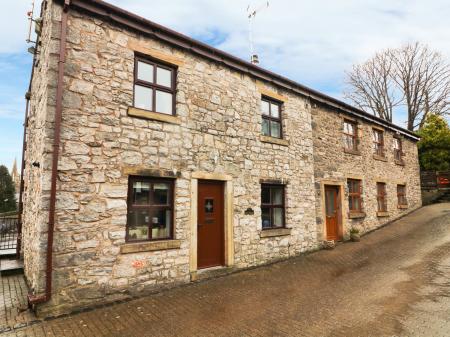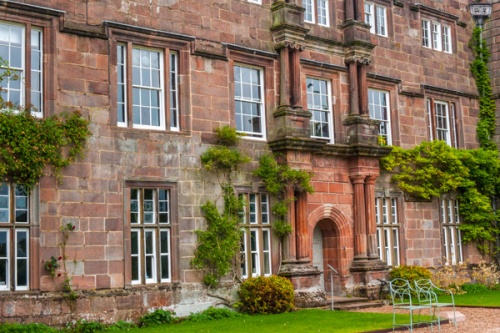

The Parkers traditionally hold the title of Bowbearers of the Forest of Bowland, the ancient woodland in which the house is situated. The house was built by Edmund Parker in the traditional H-layout of the Tudor period, with a central block and two projecting wings.
That early house was remodelled a century later with the addition of a fourth storey and rather rustic classical motifs. In 1711 a new classical wing was begun, and the fourth storey removed.
The original Tudor hall was shortened in 1754 but otherwise is essentially unchanged since it was built. Within the hall are pieces of Tudor and Stuart furniture, and a few peculiar items of historic interest. Among the latter is a 'dog stirrup', dating to 1500.

The stirrup was used to gauge the size of dogs in the Forest of Bowland; if a dog was too large to fit through the frame, it had its front paws cut off. This severe practice was meant to safeguard the deer who lived in the Forest.
Among the other rooms on view is the Library, which was originally part of the Tudor hall, and features wonderful wood panelling of 1620 and an Elizabethan overmantle to the fireplace. The Drawing Room is much later, designed by James Wyatt in the early 19th century. In this chamber are paintings by George Romney, Angelica Kauffman and JMW Turner, among other notable artists.
In all there are nine rooms on display, covering centuries of architectural and decorative styles, and featuring fine collections of furniture, art, and historic objects. Browsholme is open on regular open days throughout the summer, and by arrangement for pre-booked groups.
Visiting
Visits are by timed tour. When I arrived I booked a tour for an hour ahead, to give myself time to wander around the gardens first. The formal garden area near the house is quite small, but there are easy trails leading away from the house to a boating lake, and you can stroll around the entire lake.

A longer path leads to an 'eye-catcher' on the hill, a gateway arch designed to create a point of interest from the house. The lodge beside the gateway has several interesting heraldic panels, and everywhere is the Parker stag emblem.
When the time arrived for our tour we were greeted by the owner, a very pleasant man who obviously took great pride in his family home. He left us in the care of our guide, who took us at a very leisurely pace around a series of rooms on the ground floor and first floor. Rather than try to tell us about every single item of interest in each room our guide picked out one or two items of interest in each room.
One of those items was the dog stirrup, which was distressingly small to my eye. It would have taken a very small dog to pass through the stirrup, and according to our guide, any larger animal that could not pass through it would have its legs cut off (effectively, killing it). Not a pleasant method of enforcing forest law!
The rooms on show were a wonderful mix of Tudor, Stuart, Regency, and Victorian, with some extremely good panelling and plasterwork panelling. Browsholme is very much a lived-in house, so the rooms were not museum showrooms, but had lovely family touches like photos and - in one sitting room - a modern TV. Rather than detract from the historical feel of the place this really emphasised the family history of the Parkers and how much Browsholme is and remains a family home.






 We've 'tagged' this attraction information to help you find related historic attractions and learn more about major time periods mentioned.
We've 'tagged' this attraction information to help you find related historic attractions and learn more about major time periods mentioned.
